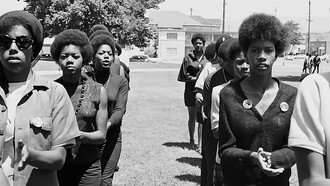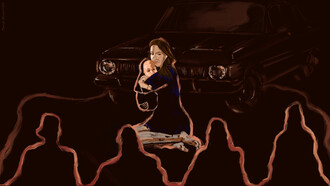Every existing thing occupies a place in space and exists in time. This is basic knowledge. Any human experience, in fact, any experience, is always exercised by perceptual processes that attest and allow the verification that every existing object occupies a place in space and exists in time.
Temporal (past, present, future) and spatial variations establish modalities that allow us to separate relational positions from the simplest ones like "I remember now", "I am here", "it's there", to the "I don't know when", "I don't know where", experiencing them as cognitive and meaningful adherences, shuffling and getting lost in the very experiences of the real and imagined, the realized and desired, in short, spatializing time, making it occupy a place in space. This densification of temporality is one of the most frequent distortions performed when continuity and sequence of events and changes are not accepted. This occurs, for example, when one develops an aversion to a weekday because it was the day his father died. Time becomes space and to spatialize is to transform it into a fetish, a necessary ornament to express fears, pains, mourning and traumas.
For the Vedic philosophers, the question of time and space was fundamentally addressed as finite and infinite. Shankaracharya spoke that the finite ignores the infinite or ignores that it is also infinite, and this "ignorance" is the cause of all subjects and objects (empirical world).
A few months ago, visiting an exhibition of Louise Bourgeois' works, I read one of her sentences that said: "Space doesn't exist, it is just a metaphor for the structure of our existence". When I read it I remembered Heidegger - temporality as the dwelling place of being - and I thought that Shankaracharya, as well as Louise Bourgeois and Heidegger, advocate a metaphysics in focusing on questions of temporality and spatiality, turning attributes into nouns or vice versa, developing questions of structure, existence, finite and infinite, dense and subtle.
The temporal and spatial experiences are more explicit when we approach the perceptions of time and space. When we focus on man, he is Figure* and the world is Background (and vice-versa) and when we try to understand him we have our whole attitude referenced in the Background, the context that allows us this perception, I mean, the referential of determination, causing perceptive partiality. We will say, for example, that man is the fruit of a society, he is the result of a family, he reacts to biological patterns, etc. In brief, these referentials impede the globalized perception of man. In order to realize globalization it is necessary to perceive a man in the world. Man-in-the-world is a Gestalt totality, we perceive a constant and integrative relationship - man-in-the-world - that cannot be divided. Man, when he is born, occupies a place, and he has a purely biological plan of existence, but when he meets the other, he is modified and begins to be human thanks to a new dimension, the dimension of the other. For example, the mother is no longer a channel that transmits the food information; instead, the mother is a Gestalt, a totality, a system that transmits this information. The meaningful expression of forms comes into existence. It is not about time as a chronological datum. It is about the transformation of a quantitative relationship into a qualitative one. Gaining conditions of being human, given the experience of being in the world with other beings in a certain cultural organization, man begins to perceive himself no longer as an organism, because his context is no longer only organic, but also social, religious, economic and moral. Man is in the world, he is constituted by it as a spatial configuration resulting from cultural, moral, social, and economic patterns, and is also a constituent of these same patterns as a temporal experience.
The perception of time, its experience, is made through referentials, as occurs in any perception of any phenomenon. The referential for the perception of time is the individual's vital space, signified by his memories and attitudes. The human experience is constituted by the transcendence of space, moving from positions to relationships, and this is so because when we relate to the other, we constitute ourselves in temporality: past, present or future. Participating in the relationship with the other who is with us, we constitute ourselves in the present; relating with the other as the transmitter of aprioristic attitudes, we present the past; relating in the function of goals, we anticipate the future. So, I conceptualize the human being as temporality while relational experience, and as spatiality in the sense of structured positioning. The relationship with the other transcends biological immanence and gives man conditions of humanity, and this experience is temporal. When we situate ourselves only in the biological range, we are an organism with needs for relationships. The human being is temporality as a psychological experience. His relationship with his constituent situator - the world, the other - is done through perception, hence, his psychological experience is his entire condition of the relationship.
Everything depends on the other, a context that allows transformation - beings in movement - or that generates spatialization - positioned beings.
*The perceptual organization obeys laws (Gestalt Psychology) whose basic principle is that all perception happens in terms of Figure and Background; we perceive the figurative element and the Background is never perceived, although it is the structuring of perception. There is always a reversibility between Figure and Background; what is Figure becomes Background and vice-versa.















